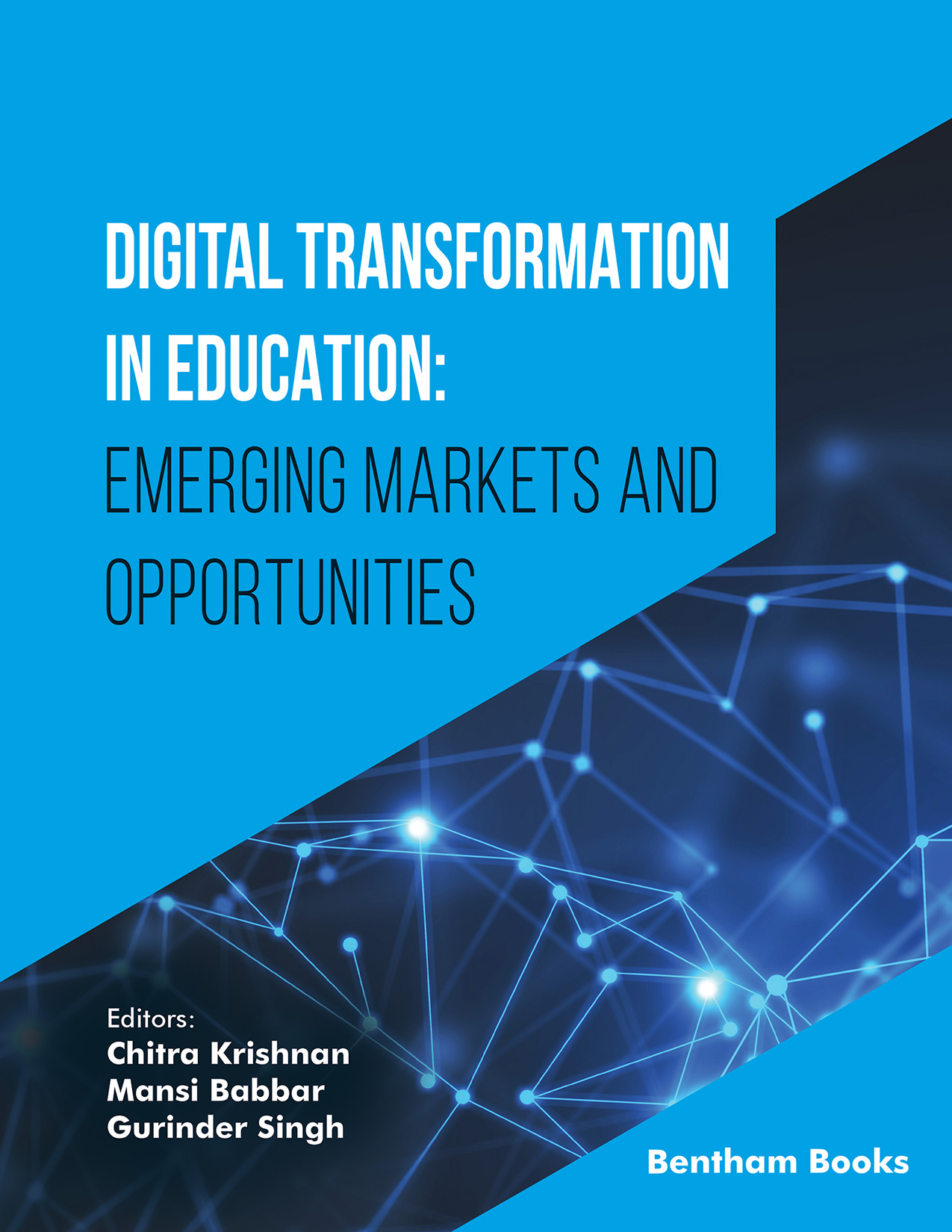The widespread digitalization of all aspects of life including the disruption caused by the Internet and the invasion by artificial intelligence necessitates rethinking educational transformation processes. The broader purpose of the digital transformation of education is to develop an effective educational system that fits the needs of the digital economy and guarantees easy access and understanding to the education stakeholders. A variety of technologies that are contributing to changing the face of education include telecommunication technologies that enable the creation of next-generation communication networks; artificial intelligence and big data processing technologies; cloud technologies; virtual and augmented reality; Internet of Things (IoT); and blockchain technologies. With the advent of these technologies and their subsequent implementation, the education sector has witnessed a radical transformation that has opened new avenues of growth, opportunities, and emerging markets that seek to benefit not only education stakeholders but also the entire humankind.
The words “fun,” “interesting,” “engaging,” “effective,” “meaningful,” “crucial,” “powerful,” “empowering,” and “real”. Teachers desire to hear those words about their classes. Its goal is to provide instruction that benefits students' lives in some way. Rapid digitalization has altered many aspects of life over the past ten years, and education is no exception. Teacher-centered instruction has a long and illustrious history in education. However, as students take more responsibility for their education and use technology to obtain knowledge, the role of the teacher has altered in many classrooms to one of advising and directing as students take more responsibility for their education and do so. Around the world, schools and institutions are starting to revaluate their learning environments in order to support this new approach to education, encourage more contact and small group work, and employ technology as a knowledge enabler. In order to ensure that students learn in a useful and relevant way today, education technology (ET) and information communication technology (ICT) are essential.
Our book “Digital Transformation in Education and Artificial Intelligence: Emerging Markets and Opportunities” provides a comprehensive understanding of the emergence and evolution of digital technologies and artificial intelligence in the field of education. It also aims to shed light on the various advantages and drawbacks of the same along with the opportunities and markets that are emerging because of such a digital education transition. In this book, a group of distinguished contributors discusses the issues that our educational institutions are currently facing as well as the role that technology and innovation have played in the global revolution in education. The essential requirement for educators at all levels to obtain a complete understanding of the technology-based teaching and learning tools at their disposal in order to best support student learning is the main theme of this book. For policymakers, practitioners, academics, researchers, and university and college students, this book is a great resource. Topics covered in this book such as:
Chapter 1 critically discusses the few adoptions of blockchain in education that have been carried out by HEIs and businesses.
Chapter 2 explores the factors affecting technostress levels among the teachers and students caused due to the sudden shift from classroom teaching to online teaching.
Chapter 3 has endeavoured to evaluate some of the most crucial concerns in contemporary higher education and made appropriate recommendations.
Chapter 4 highlights a global standpoint on the technological outbreak in the education sector. It investigates copious advantages and opportunities of digital learning and significantly focuses on different technologies deployed for its implementation and improvement.
Chapter 5 focuses on emerging trends in education including the incorporation of new technologies. Among the technologies covered in no particular order of importance are virtual reality, augmented reality, mobile learning devices, and the internet of things.
Chapter 6 has identified the challenges and opportunities associated with online/blended teaching learning in a pure educational setting.
Chapter 7 gives us more insight into how conversational AI will further transform education in the future.
Chapter 8 discusses the value of blended learning in the context of the pandemic, as well as the many obstacles that come with it.
Chapter 9 looks at the benefits and drawbacks of using a digital classroom, as well as the key obstacles it poses.
Chapter 10 examines how future online learning environments may alter how teachers impart knowledge to students and how students learn.
Chapter 11 delves into the unique characteristics of digital education, as well as the current level of its implementation, expected outcomes, and related problems, hence a transformation study has demonstrated the fundamentals of e-education with its implementation in modern society.
Chapter 12 discusses AI in education, its history, opportunities, and challenges.
We would like to take this opportunity to express our gratitude to the contributors for their contributions to this book. All of the chapters were chosen via a peer review process. We hope that readers will gain a lot of understanding of the role of technology in education from a variety of viewpoints and studies and they will find this book useful.
Chitra Krishnan
Symbiosis Centre for Management Studies,
Noida,
Symbiosis International Deemed University,
Pune,
India
Mansi Babbar
University of Delhi,
Delhi,
India
Gurinder Singh
Amity University,
Noida,
India

